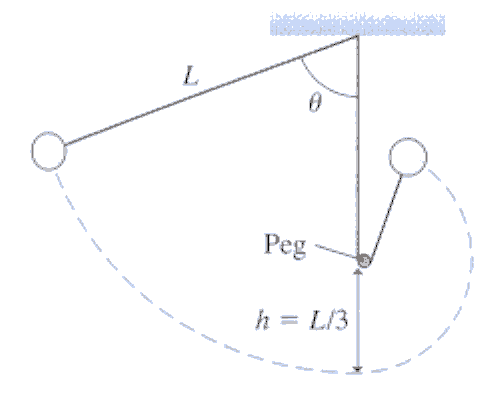CHAPTER 10
- (P.299 Prob.34) A cannon tilted up at a 30° angle fires a cannon ball
at 80 m/s from atop a 10-m-high fortress wall. What is the ball's impact
speed on the ground below?
- (P.300 Prob.38) The spring in Figure P10.38a is compressed by length Dx.
It launches the block across a frictionless surface with speed v0.
The two springs in FigureP10.38b are identical to the spring of Figure
P10.38a. They are compressed by the same length Dx
and used to launch the same block. What is the block's speed?

- (P.300 Prob.44) A 1000-kg safe is 2.0 m above a heavy-duty spring when the
rope holding the safe breaks. The safe hits the spring and compresses it 50
cm. What is the spring constant of the spring?
- (P.301 Prob.54) A pendulum is formed from a small ball of mass m on
a spring of length L. As Figure P10.54, a peg is height h = L/3
above the pendulum's lowest point. From what minimum angle θ must
the pendulum be released in order for the ball to go over the top of the peg
without the string going slack?

- (P.301 Prob.58) a 100-g balll moving to the right at 4.0 m/s collides
head-on with a 200-g ball that is moving to the left at 3.0 m/s.
a. If
the collision is perfectly elastic, what are the speed and direction of each
ball after the collision?
b. If the collision is perfectly inelastic,
what are the speed and direction of each ball after the collision?
- (P.303 Prob.72) Challenge Problem. A 2.0-kg cart has a
spring with k = 5000 N/m attached to its front, parallel to the
ground. This cart rolls at 4.0 m/s toward a stationary 1-kg cart.
a. What
is the maximum compression of the spring during the collision?
b. What is
the speed of each cart after the collision?

